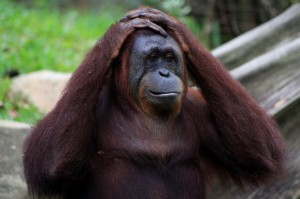
Several weeks ago, three national parks in Sumatra, Indonesia were collectively labeled a UNESCO World Heritage Site in Danger. This inscription reiterates the urgency to issue full protections for the last remaining tracts of unspoiled rainforest on the island.
The Sumatran rainforest, named a UNESCO World Heritage Site in 2004 for its wealth of biodiversity, contains 2.5 million hectares of tropical rainforest and features an incredible 10,000 plant species, 200 mammal species including the critically endangered Sumatran tiger and orangutan, and 580 bird species. The organization added Sumatra to its Danger List this year as a plea to increase awareness of the threats facing the Heritage Site, most notably “poaching, illegal logging, agricultural encroachment, and plans to build roads through the site.”
Although adding Sumatra to the list of Heritage Sites in Danger is certainly a positive step forward that will demonstrate the need for strict conservation of the area, the reality is that UNESCO’s actions may have come too late. The World Conservation Union (IUCN) has urged UNESCO to put Sumatra on the Danger List ever since its initial inscription as a World Heritage Site in 2004. Since 2007 the Rainforest Action Network (RAN) has been running hard-hitting campaigns targeting the palm oil and pulp and paper industries, warning the public about the dangers posed to this natural habitat long before its appearance on the Danger List. The palm oil and pulp and paper industries represent the largest drivers of rainforest destruction in Indonesia, posing a grave threat to Sumatra’s remaining forests, communities and endangered species.
Even those involved in placing Sumatra on the Danger List know that engendering awareness of the severity of the threats will not be enough to save this precious rainforest, or the orangutans that call it their home. Orangutans only live in the rainforests of Indonesia and Malaysia. These countries together are responsible for 85% of the world’s palm oil production, leaving little forest left for anyone or anything but the industry’s palm monoculture. According to Peter Shadie, the IUCN’s senior advisor on World Heritage, it must now be ensured that the listing “leads to real action on the ground to tackle long standing threats.” Wise words, Mr. Shadie.
Nevertheless, the addition of Sumatra to UNESCO’s Danger List demonstrates to the world that the island is in a severely fragile position, and that it is of paramount importance that we take action to halt destruction before this irreplaceable bastion of rainforest and culture has completely disappeared.
Will industries react to this listing? Will logging companies cease fire? Only time will tell. However, we do know for certain that the palm oil and pulp & paper industries will not stop destroying the diverse rainforests of Southeast Asia unless they are forced to stop by environmental and human rights organizations or the Indonesian government. Join the Rainforest Agribusiness campaign’s rapid responder team so that when we have an urgent call for action we can count on you to make a difference.